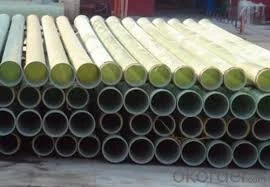
-
 Afrikaans
Afrikaans -
 Albanian
Albanian -
 Amharic
Amharic -
 Arabic
Arabic -
 Armenian
Armenian -
 Azerbaijani
Azerbaijani -
 Basque
Basque -
 Belarusian
Belarusian -
 Bengali
Bengali -
 Bosnian
Bosnian -
 Bulgarian
Bulgarian -
 Catalan
Catalan -
 Cebuano
Cebuano -
 China
China -
 China (Taiwan)
China (Taiwan) -
 Corsican
Corsican -
 Croatian
Croatian -
 Czech
Czech -
 Danish
Danish -
 Dutch
Dutch -
 English
English -
 Esperanto
Esperanto -
 Estonian
Estonian -
 Finnish
Finnish -
 French
French -
 Frisian
Frisian -
 Galician
Galician -
 Georgian
Georgian -
 German
German -
 Greek
Greek -
 Gujarati
Gujarati -
 Haitian Creole
Haitian Creole -
 hausa
hausa -
 hawaiian
hawaiian -
 Hebrew
Hebrew -
 Hindi
Hindi -
 Miao
Miao -
 Hungarian
Hungarian -
 Icelandic
Icelandic -
 igbo
igbo -
 Indonesian
Indonesian -
 irish
irish -
 Italian
Italian -
 Japanese
Japanese -
 Javanese
Javanese -
 Kannada
Kannada -
 kazakh
kazakh -
 Khmer
Khmer -
 Rwandese
Rwandese -
 Korean
Korean -
 Kurdish
Kurdish -
 Kyrgyz
Kyrgyz -
 Lao
Lao -
 Latin
Latin -
 Latvian
Latvian -
 Lithuanian
Lithuanian -
 Luxembourgish
Luxembourgish -
 Macedonian
Macedonian -
 Malgashi
Malgashi -
 Malay
Malay -
 Malayalam
Malayalam -
 Maltese
Maltese -
 Maori
Maori -
 Marathi
Marathi -
 Mongolian
Mongolian -
 Myanmar
Myanmar -
 Nepali
Nepali -
 Norwegian
Norwegian -
 Norwegian
Norwegian -
 Occitan
Occitan -
 Pashto
Pashto -
 Persian
Persian -
 Polish
Polish -
 Portuguese
Portuguese -
 Punjabi
Punjabi -
 Romanian
Romanian -
 Russian
Russian -
 Samoan
Samoan -
 Scottish Gaelic
Scottish Gaelic -
 Serbian
Serbian -
 Sesotho
Sesotho -
 Shona
Shona -
 Sindhi
Sindhi -
 Sinhala
Sinhala -
 Slovak
Slovak -
 Slovenian
Slovenian -
 Somali
Somali -
 Spanish
Spanish -
 Sundanese
Sundanese -
 Swahili
Swahili -
 Swedish
Swedish -
 Tagalog
Tagalog -
 Tajik
Tajik -
 Tamil
Tamil -
 Tatar
Tatar -
 Telugu
Telugu -
 Thai
Thai -
 Turkish
Turkish -
 Turkmen
Turkmen -
 Ukrainian
Ukrainian -
 Urdu
Urdu -
 Uighur
Uighur -
 Uzbek
Uzbek -
 Vietnamese
Vietnamese -
 Welsh
Welsh -
 Bantu
Bantu -
 Yiddish
Yiddish -
 Yoruba
Yoruba -
 Zulu
Zulu
fiberglass stack liner alternative
Exploring Alternatives to Fiberglass Stack Liners
In the realm of industrial applications, the efficiency and effectiveness of stack liners play a crucial role in the performance of flue gas systems. Traditionally, fiberglass stack liners have been a go-to choice due to their lightweight nature and resistance to corrosion. However, as industries continue to evolve and environmental regulations become more stringent, the demand for better alternatives has grown. This article will explore some potential substitutes to fiberglass stack liners, along with their benefits and considerations.
Understanding Fiberglass Stack Liners
Fiberglass stack liners are composite materials made from glass fibers and resin. They are primarily used to protect smoke stacks and chimneys from the corrosive effects of flue gases. The advantages of fiberglass include its high strength-to-weight ratio, resistance to environmental degradation, and relative cost-effectiveness. However, issues such as thermal expansion, mechanical stress, and the ability to withstand higher temperatures can challenge their long-term effectiveness.
The Need for Alternatives
As industries advance, the limitations of fiberglass stack liners have prompted the exploration of alternative materials. These alternatives must meet various criteria, including longevity, resistance to corrosion and thermal stress, ease of installation, and cost efficiency. Here are some noteworthy alternatives to consider
Stainless steel has emerged as a popular alternative to fiberglass stack liners. Known for its durability and resistance to corrosion, stainless steel can withstand harsh conditions and high temperatures, making it suitable for industrial applications. The smooth surface of stainless steel also ensures efficient gas flow and reduces the buildup of deposits. However, stainless steel liners are generally heavier and more expensive to install compared to fiberglass.
2. High-Temperature Ceramic Materials
fiberglass stack liner alternative

Ceramic materials have been gaining attention for their remarkable resistance to high temperatures and corrosive environments. High-temperature ceramics can endure far greater thermal stresses than fiberglass, making them an ideal choice for stacks that face extreme thermal cycling. Moreover, ceramics are environmentally friendly, as they do not emit volatile organic compounds (VOCs). The main drawbacks include their brittleness, which can lead to cracking, and the complexities involved in installation.
3. Polymer-Based Liners
Advanced polymer materials, such as polypropylene and polyvinyl chloride (PVC), offer excellent chemical resistance and can be engineered to withstand high temperatures. These polymers are lightweight and easy to install, providing an economical alternative to traditional fiberglass liners. However, they may not be suitable for all applications, especially where extreme heat and corrosive gases are prevalent.
4. Concrete Liners
In some industrial scenarios, concrete liners can be utilized due to their robust nature and inherent resistance to corrosion. While concrete is heavier and more challenging to install, it offers long-term durability and can be molded to fit specific configurations. Additionally, concrete can be mixed with various additives to enhance its performance under different environmental conditions. However, potential cracking under thermal stress remains a concern.
5. Carbon Fiber Composites
For specialized applications, carbon fiber composites are emerging as an innovative alternative. They possess a high strength-to-weight ratio and exceptional chemical resistance, making them suitable for demanding environments. The lightweight nature of carbon fiber allows for easier installation and reduced structural support requirements. Nevertheless, the cost of carbon fiber materials can be significantly higher than traditional options, which may limit their use in industrial applications.
Conclusion
As industries seek to improve their operational efficiency and minimize environmental impact, the exploration of alternatives to fiberglass stack liners is essential. Each option, from stainless steel to carbon fiber composites, offers unique benefits and challenges. Ultimately, the choice of material will depend on specific application requirements, budget constraints, and long-term maintenance considerations. By evaluating the available alternatives, industries can make informed decisions that lead to enhanced performance and sustainability in their flue gas systems.









